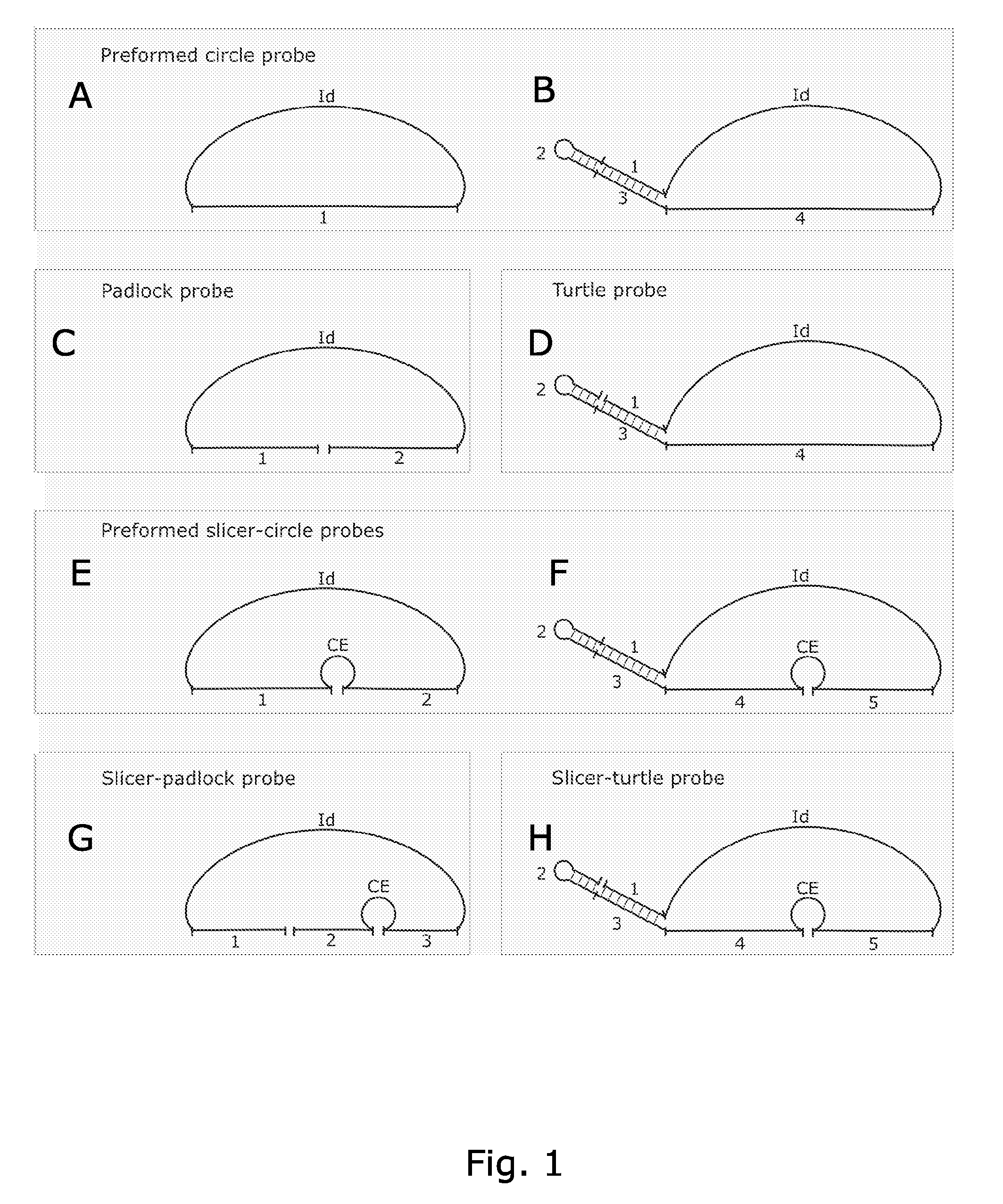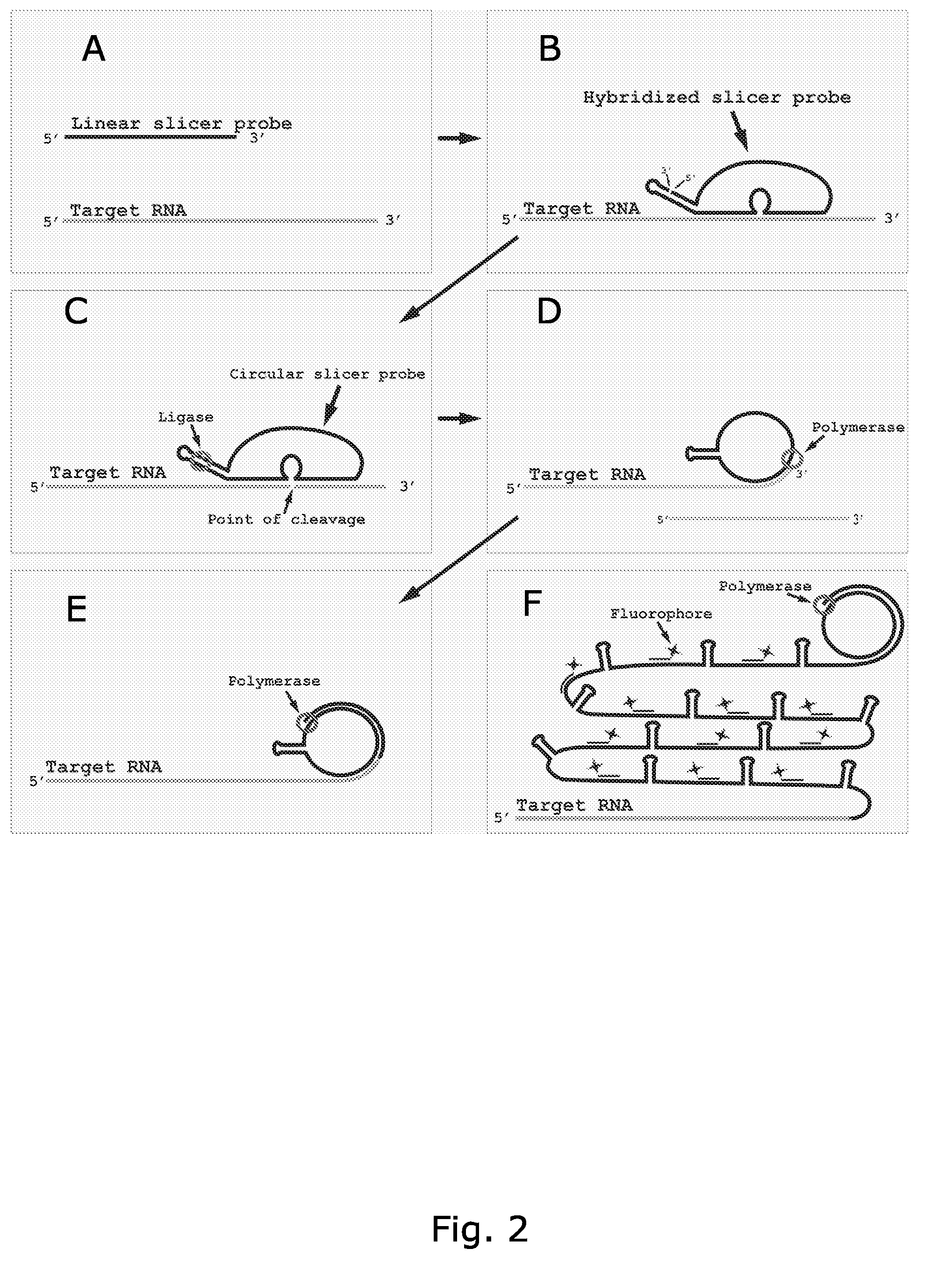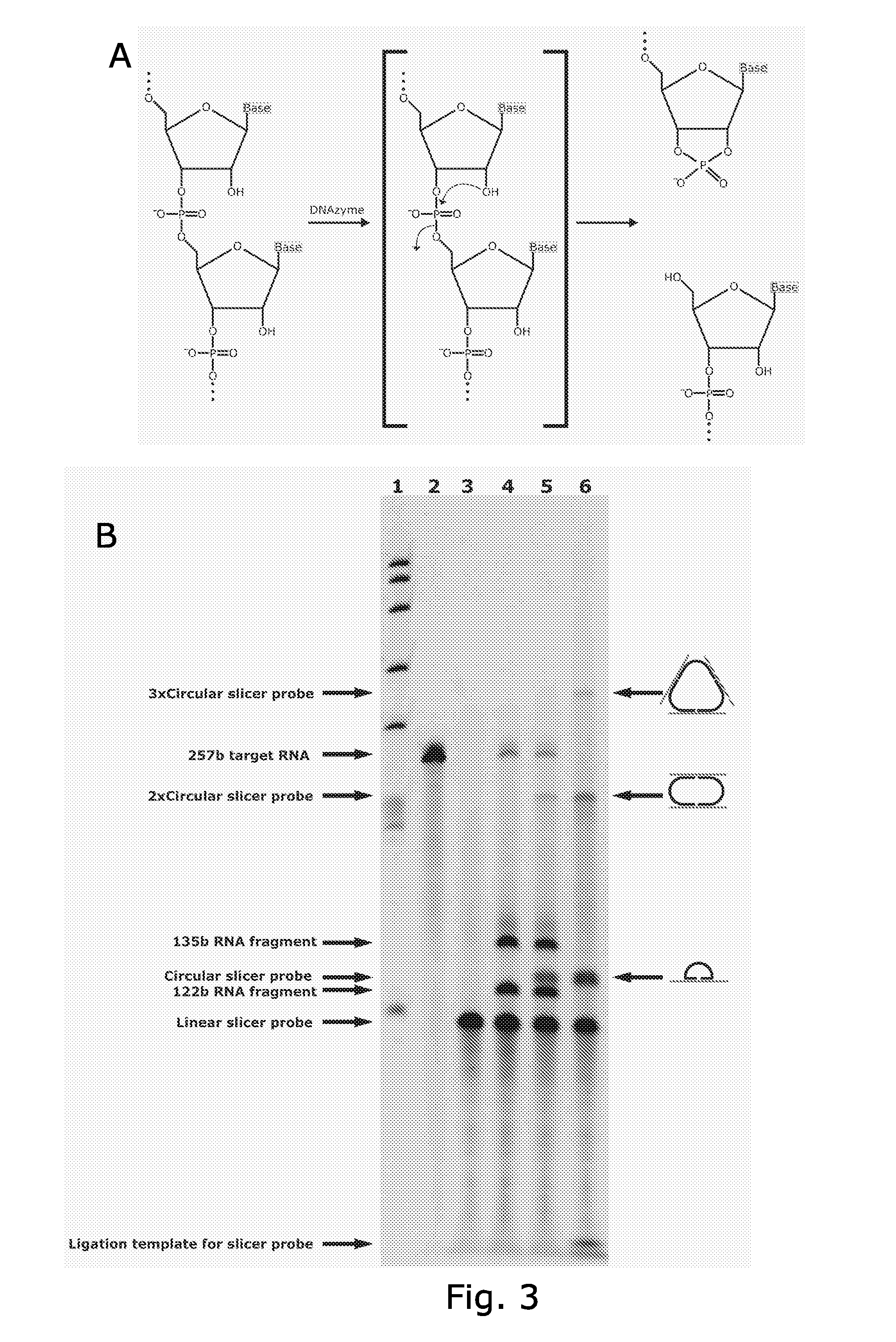Circle probes and their use in the identification of biomolecules
a probe and circle technology, applied in the field of localised detection of nucleic acids, can solve the problems of insufficient sensitivity of this approach, inability to detect variations in the hybridisation target, and insufficient molecular resolution, etc., to achieve the effect of detecting reporting on the location of the target, and reducing the detection cos
- Summary
- Abstract
- Description
- Claims
- Application Information
AI Technical Summary
Benefits of technology
Problems solved by technology
Method used
Image
Examples
example 1
Cleavage of RNA Using a Slicer Probe with the 10-23 DNAzyme as Cutting Element
[0335]Ligation of the slicer-padlock, to form a closed circular structure, and cleavage of the RNA was done in one step.
[0336]The RNA used was a fragment of the 3′-UTR of the yeast SSA4 RNA transcribed in vitro, using the T7 RNA polymerase and the Puc18 vector, with a DNA fragment comprising part of the 3′-UTR of the yeast SSA4 inserted, as transcription template.
[0337]Cleavage of the SSA4 RNA was performed in a buffer comprising: 10 mM Tris-HCL (pH7.5 at 25° C.), 10 mM MgCl2 and 10 μM ATP since These conditions was optimized for ligating DNA on an RNA template in solution (according to Nilsson M. et al. Nat Biotechnol. 18(7):791-3. (2000)). Since this buffer contains Mg2+ cleavage of the target RNA may be performed simultaneously with ligation of the probe. The final concentration SSA4 RNA and SSA4-slicer-padlock probe was 0.5 μM and 1 μM, respectively. The reactions were incubated at 37° C. for 90 minute...
example 2
Array Based RNA Detection Using a Slicer-Padlock Probe
[0339]Array based detection of RNA using a streptavidine coated microscopic slide as solid support and in vitro transcribed SSA4 RNA (similar to the RNA used in example 1) as target RNA (FIG. 4).
[0340]The in vitro transcribed SSA4 RNA was produced using the T7 RNA polymerase and the Puc18 vector with a DNA fragment comprising the SSA4 sequence inserted as transcription template.
Hybridisation of Capture Oligonucleotide:
[0341]The capture oligonucleotide used in this assay was a 3′-biotin coupled oligonucleotide complementary to the 5′-end of an in vitro transcribed target RNA molecule and the solid support was provided in the form of a streptavidine coated microscopic slide. A plastic cover containing wells with a diameter of approximately 6 mm was attached to the slide in order to separate the different reactions. A final concentration of 1 μM capture oligonucleotide was attached to the streptavidine coated slide in a buffer conta...
example 3
In Situ Detection of RNA Using a Turtle Probe
[0352]In situ detection of EBER1 (Epstein-Barr Early Region) RNA in paraffin embedded formalin fixed human tonsil tissue infected with Epstein-Barr virus (EBV) (see FIG. 5).
[0353]Pretreatment: The formalin fixed paraffin embedded tissue was deparaffinised with xylen for 2×10 minutes and then washed in an ethanol series of 99%, 85%, 70% to remove residual xylen. The tissue was then dehydrated and air dried at room temperature. The tissue was treated with 0.05% pepsin (Sigma) dissolved in 0.1 M HCl for 15 minutes at 37° C. The pepsin treatment was terminated by submerging the slide in wash buffer (0.1 M Tris-HCl, 0.15 M NaCl and 0.05% Tween-20). The tissue was refixed in 0.4% paraformaldehyde in 1×PBS for 20 minutes, and washed in wash buffer for 5 minutes at 37° C. and dehydrated and air dried at room temperature.
[0354]Probe Hybridization: A Hybridization mixture containing: 0.1 μM EB1-turtle probe, 20% formamide, 2×SSC, 0.2 μg / μl BSA, 5% ...
PUM
| Property | Measurement | Unit |
|---|---|---|
| temperature | aaaaa | aaaaa |
| concentration | aaaaa | aaaaa |
| incubation time | aaaaa | aaaaa |
Abstract
Description
Claims
Application Information
 Login to View More
Login to View More - R&D
- Intellectual Property
- Life Sciences
- Materials
- Tech Scout
- Unparalleled Data Quality
- Higher Quality Content
- 60% Fewer Hallucinations
Browse by: Latest US Patents, China's latest patents, Technical Efficacy Thesaurus, Application Domain, Technology Topic, Popular Technical Reports.
© 2025 PatSnap. All rights reserved.Legal|Privacy policy|Modern Slavery Act Transparency Statement|Sitemap|About US| Contact US: help@patsnap.com



